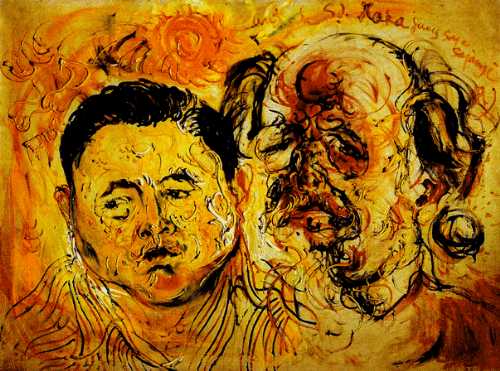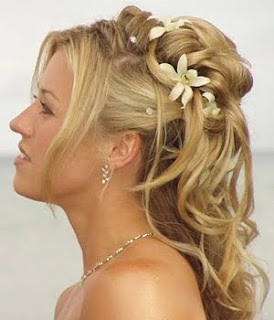

 Name: Affandi (1907 – May 23, 1990)
Name: Affandi (1907 – May 23, 1990)
"Pohon Beringing"
 "Self-portrait"
"Self-portrait"
"Kuda Putih"
As depicted from above, most of his artworks are impressive due to his strokes that are "swirly". He tends to use warm colors like yellow, orange and also ochre colors. Quoted, he claims that most of his artworks are "lively" which explains the technique of his.







 Wedding updo hairstyles Several teenage girl will get themselves accompanied by a damage when required and nominated for that homecoming courtroom. Next to make sure you prom, this is about the most splendid occasions at a teen female's life. Much thinking about should enter in the thoughts in relation to homecoming hair styles. After all of the, all eyes shall be on you for everyone few occasions, or as you may grow olders you have the imagery as increased reminders connected with years earlier.
Wedding updo hairstyles Several teenage girl will get themselves accompanied by a damage when required and nominated for that homecoming courtroom. Next to make sure you prom, this is about the most splendid occasions at a teen female's life. Much thinking about should enter in the thoughts in relation to homecoming hair styles. After all of the, all eyes shall be on you for everyone few occasions, or as you may grow olders you have the imagery as increased reminders connected with years earlier.










 Prom night is obviously one of the most important social events in a teen's life. It combines romance, a party atmosphere, and a sense of saying goodbye to high school and carefree days.Hair extensions are a simple way to get a beautiful prom hair style for either an up do or long and glamorous wavy look. Use hot roller, curling irons and a blow dryer to style your prom hair style. Just be sure you are careful near the bonds and/or clips so that you can readily conceal where the extensions are attached.
Prom night is obviously one of the most important social events in a teen's life. It combines romance, a party atmosphere, and a sense of saying goodbye to high school and carefree days.Hair extensions are a simple way to get a beautiful prom hair style for either an up do or long and glamorous wavy look. Use hot roller, curling irons and a blow dryer to style your prom hair style. Just be sure you are careful near the bonds and/or clips so that you can readily conceal where the extensions are attached.





 First, you should consider your face shape when you get your hair cut. If your face is round, you probably don't want to go with a pixie cut or something super-sleek. Instead, try something with choppy layers around your cheekbones and length that falls a little below your chin. Add a little volume at the top and some side-swept bangs and you instantly elongate the appearance your face. On the other hand, if your face is long, you may want to add lots of long bangs and cut your hair chin-length to shorten the appearance of your face. Square faces will want to go with softer layers instead of blunt cuts, while heart-shaped faces look great with styles that flip out and balance the thinness of their face at the jaw.
First, you should consider your face shape when you get your hair cut. If your face is round, you probably don't want to go with a pixie cut or something super-sleek. Instead, try something with choppy layers around your cheekbones and length that falls a little below your chin. Add a little volume at the top and some side-swept bangs and you instantly elongate the appearance your face. On the other hand, if your face is long, you may want to add lots of long bangs and cut your hair chin-length to shorten the appearance of your face. Square faces will want to go with softer layers instead of blunt cuts, while heart-shaped faces look great with styles that flip out and balance the thinness of their face at the jaw.